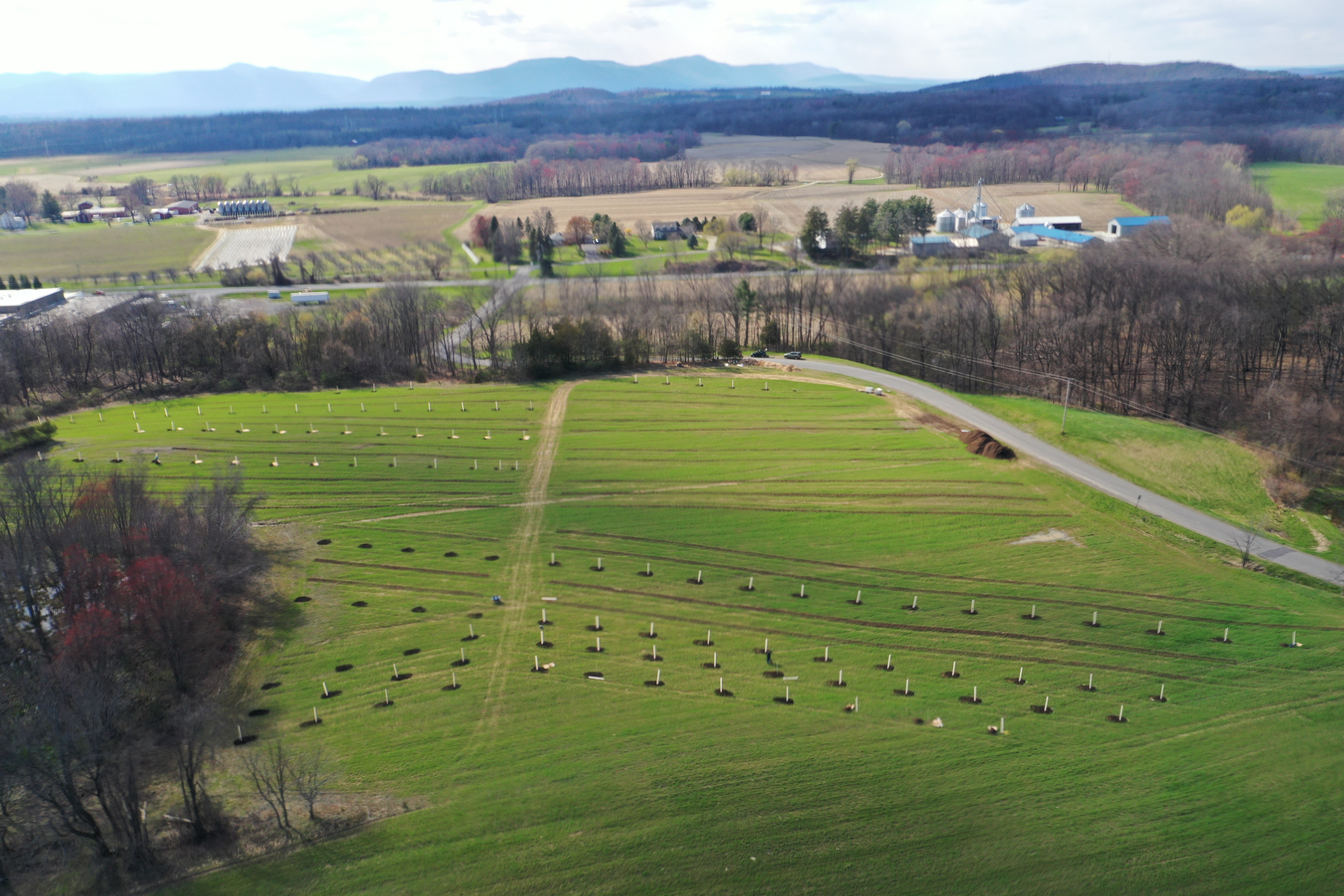This carbon challenge is bigger than cars, aviation and shipping combined
Adam Aston
Thu, 08/13/2020 – 02:15
You may not know it, but you rely on industrial heat every day. It helped make the bricks that hold up your home; the cement underfoot. It forged the steel and glass in your car, and it also cooked the aluminum, plastic and silicon in the very screen on which you may be reading these words.
Industrial heat is essential but largely invisible. To transform basic inputs into stuff we need, manufacturers constantly heat (and cool) minerals, ores and other raw materials to extreme temperatures. And for all the magic of this everyday alchemy, industrial heat poses a growing threat to the climate. The world’s kilns, reactors, chillers and furnaces are powered mostly by fossil fuels.
High-temperature industrial heat, over 932 degrees F, poses a particular challenge because that’s the point at which fuels beyond electricity become the mainstay. Overall, industrial thermal energy accounts for about a tenth of global emissions, according to a December study by Innovation for Cool Earth Forum (ICEF, a Japan-backed multinational expert group). At 10 percent, industrial heat ranks on par with the combined emissions of cars (about 6 percent), planes (about 2 percent) and ships (about 2 percent).
Yet while those transport sectors are advancing towards low-carbon solutions — with promising technologies cultivated by multilateral accords — industrial heat lacks any consensus plan and has a long to-do list to develop low-carbon alternatives.
The options include biodiesel, renewable electricity, renewable natural gas, solar thermal, geothermal, thermal storage and hydrogen. Yet as a best guess, if these were market-ready today, renewable thermal solutions would cost from two times to over 10 times more than fossil fuels, according to an October report from the Center for Global Energy Policy (CGEP) at Columbia University.
Making natural gas renewable
In time, decarbonizing industrial heat is likely to require an all-of-the above mix of solutions. But for now, renewable natural gas (RNG) may offer a fix soonest. Chemically similar to the fossil gas piped to our kitchens, RNG is instead generated from the breakdown of organic matter at landfills (the biggest current source), municipal sewage treatment plants, farm waste and similar sites. RNG also can be blended into regular natural gas pipelines with minimal modification, much the way that input from windmills can flow onto the same grid as power generated by a coal plant.
In time, decarbonizing industrial heat is likely to require an all-of-the above mix of solutions. But for now, renewable natural gas (RNG) may offer a fix soonest.
In fact, the wind example can help illustrate how early efforts to decarbonize industrial thermal energy are shaping up. In the 2000s, when wind and solar weren’t yet cost-competitive, market players pioneered ways to sell renewable energy indirectly. The solution was a set of standards and trading rules known as renewable energy credits, or RECs. The credits let a business in, say, Pittsburgh buy wind power generated in California, even before renewables were yet available on Pennsylvania’s grid.
What’s more, RECs allow a wind farm to sell both the power it generated and the renewable attributes of that power. As consumer and corporate demand for renewables grew, the value of the RECs rose, thereby incenting new wind and solar projects. Over time, RECs let companies source the renewable energy they needed, even when it wasn’t available locally, which made it easier for companies and states to slowly boost their targets for renewables.
Certifying renewable thermal solutions
Fast forward to 2020, and a team of collaborators is hoping to adapt learnings pioneered with RECs to nurture a nascent market for zero-carbon fuels, such as RNG, that buyers including L’Oréal USA and the University of California System are already using to generate renewable thermal energy.
Today, RNG is held back in part by a Catch-22 financial trap. Costs add up quickly: equipment to collect biogas (the unprocessed methane-rich vapor given off by waste); upgrade the gas to pipeline quality; and connect to existing gas pipelines.
Capital needs for smaller landfill projects run from $5 million to $25 million. Larger projects — such as agriculture and wastewater plants — can hit $100 million, according to Jade Patterson, BloombergNEF’s analyst covering RNG. On average, each RNG project requires $17 million of capital investment, based on data from the RNG Coalition.

A cement factory blast furnace in Maddaloni, Italy.
At that price, most farms or town dumps can’t afford to develop biogas collection on their own. “An effective certification program could give lenders the confidence to fund new installations,” Patterson said. And if farms see reliable demand for their RNG, more are likely to make the investment: supply grows; prices fall; and the Catch-22 can be broken.
“Companies are trying to decarbonize the heat piece of their Scope 1 carbon footprint,” explained Blaine Collison, an Environmental Protection Agency veteran and senior vice president at David Gardiner and Associates, a co-convener – along with the World Wildlife Fund and the Center for Climate and Energy Solutions – of the Washington, D.C.-based Renewable Thermal Collaborative. “Creating renewable thermal attributes and trading instruments is critical to enable companies to act, to show the actions they’re taking and to demonstrate the reductions they’re achieving.”
The effort to extend a REC model to renewable thermal energy is being co-led by the Center for Resource Solutions (CRS), a San Francisco based non-governmental organization that’s been advancing sustainable energy via policy and market-based innovations since 1997.
The first step? CRS is building a set of rules that meet the highest environmental standards and ensure that when customers buy green fuel, such as RNG, they can verify its zero-carbon merits, said Rachael Terada, CRS’ director of technical projects, in a recent webinar.
Now in its first draft, CRS’ Green-e certified fuel certificate standard is focusing initially on RNG, already being produced and sold on a small scale across North America. The standard can be extended to other renewable fuels in time. (Watch out for more news in this space at CRS’ Renewable Energy Markets 2020, convening online for free Sept. 21-24.)
Covering the U.S. and Canada, the CRS Green-e certificate program will establish protocols to create a registry such that each dekatherm (equal to 1 million British thermal units) is unique and cannot be double-counted, Terada said.
An effective certification program could give lenders the confidence to fund new installations.
There’s already demand from industry to buy more RNG, said Benjamin Gerber, chief executive of Minneapolis-based M-RETS (formerly Midwest Renewable Energy Tracking System), one of CRS’s partners in creating this trading platform.
“Having clear standards for renewable thermal products along with robust trading platforms will help drive greenhouse gas reductions,” Collison said. “We know that there’s a growing corporate need for these solutions.”
Thermal energy, in the long run
CRS’ Green-e initiative has the potential to accelerate investment in renewable fuels, and thereby open up ways to decarbonize industrial energy markets.
Before then, companies can take some basic first steps, such as auditing their thermal energy use. “A lot of organizations simply haven’t done the work to understand how they’re heating and cooling their operations,” said Meredith Annex, who heads BloombergNEF’s heating decarbonization research team.
The urgency is growing. As industrialization accelerates in China, India and other emerging markets, global demand for industrial heat has grown by 50 percent since 2000, estimates BloombergNEF, and without lower carbon options, will continue to rise.
Without a fix, global climate goals may not be achievable. “Decarbonizing industrial heat production will be essential to meeting the Paris Agreement goals,” notes David Sandalow, a former Obama administration official and lead author of ICEP’s roadmap to decarbonize industrial heat.
Manufacturing















